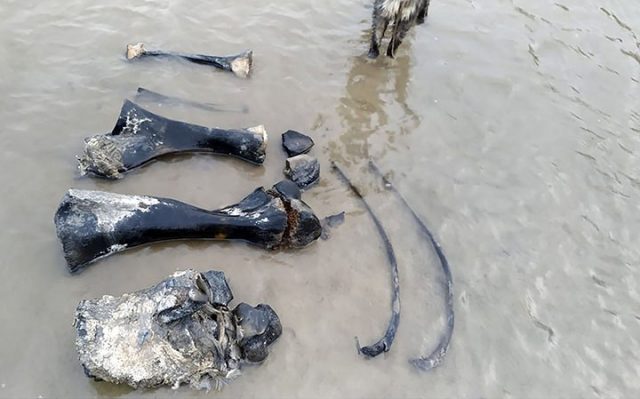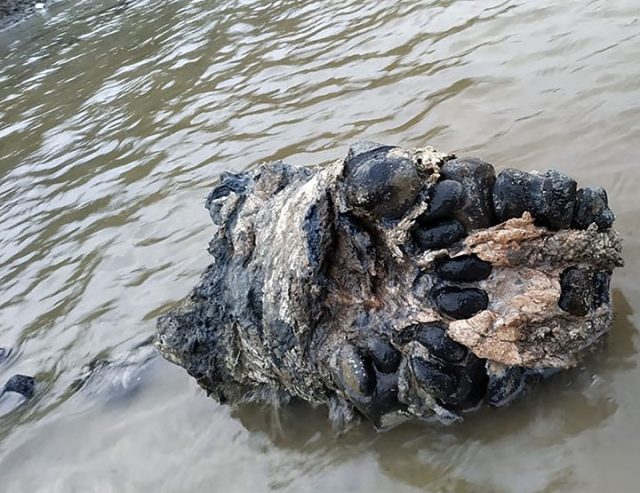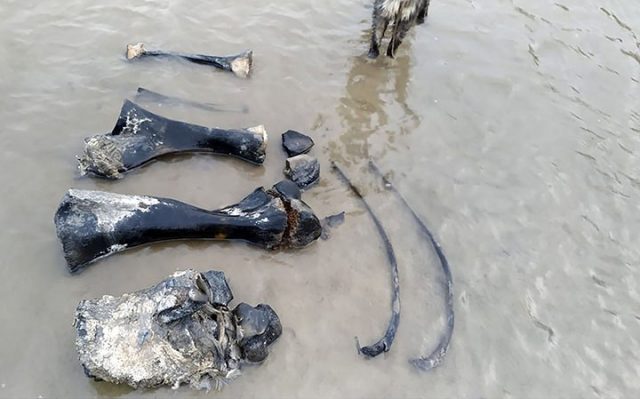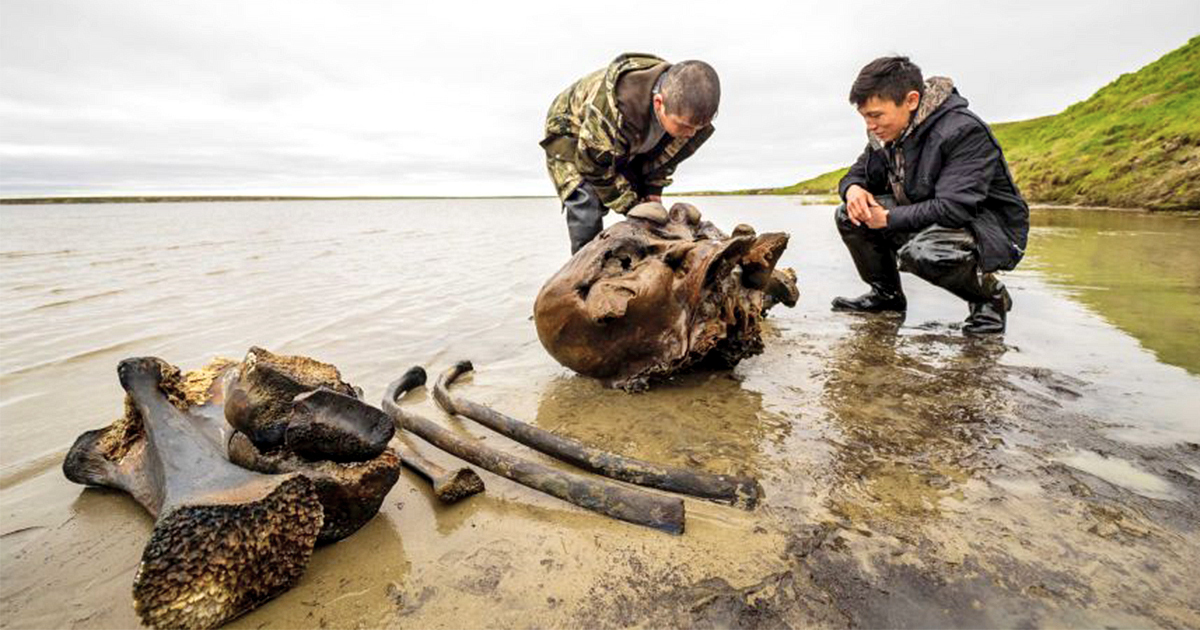A Siberian lake has uncovered a fantastic woolly mammoth with its ligaments intact. For centuries, animals and archaeological artifacts have rested deep in the frozen barrens of countries like Russia and the Scandinavian nations, far away from the eyes of scientists and other experts because they were buried out of reach in snow and ice.
But soaring temperatures in Russia’s coldest regions, including Siberia, have meant that specimens and artifacts once frozen deep in the snow have been freed from their icy shackles and have occasionally surfaced, much to the delight and amazement of scientists who now have a chance to study species long extinct. In 2018, a nearly perfect puppy was found in the melting permafrost, so intact it still had some of its fur.
This summer, on July 23, the retreating permafrost offered up another treasure, much to the surprise of reindeer herders who were working on the edge of Pechevalavato Lake, above the Arctic Circle, in the Yamalo-Nenets region. They came upon parts of a young adult woolly mammoth, a teenager. Tests on the soft tissue will reveal just how old the mammoth is, but right now scientists suggest it’s about 10,000 or 12,000 years old.

The crew found part of the animal’s skull, along with some ligaments, some ribs and a piece of one foot. Now the remains are under investigation by scientists, including Dmitry Frolov, director of the Arctic Research Centre, who is hopeful more parts of the mammoth are just waiting to be discovered. “The whole skeleton is there,” he said recently in a news release. Now, a crew is back at the lake trying to find the rest of that skeleton.

Although scientists are pleased by this find and the insights the ensuing research will prompt, there is no doubt that the increasing temperatures, year over year, are a cause for some concern. This July is approximately 10 degrees (C) warmer than July of 2019, which may be indicative of the negative effects of climate change.
Nonetheless, scientists all over Russia — and elsewhere — are anxious to retrieve more of the mammoth to study, if it’s possible, now that the ice is melting during this particularly warm summer.

This is not the first time there have been unusual fluctuations in weather in Siberia. Over the past several years, winters have become as cold as minus 90 degrees (F), which is very cold even for Siberia. And, meteorologists have reported, once or twice in recent summers the temperature has climbed to an astonishing 90 degrees (F). Those are striking differences from past winters and summers in the region.
The woolly mammoth, while considered a valuable find for researchers, is not the only specimen that has been freed by melting ice in the area in recent years. A 42,000 year old foal was found two years ago, and a 32,000 year old wolf’s head was found in the region in the recent past as well.
Scientists are now attempting to find more remains of the woolly mammoth in the Siberian lake, which will help them assess the creature’s age, as well as other pertinent information.
“Of course, we’d like to find the remaining parts,” said local museum scientist Yevgeniya Khozyainova in a statement to the media, “to understand how complete a find it is. Whenever there is soft tissue left behind, it is valuable material to study.”
Related Article: Huge 25,000-yr-old Hut Discovered Made Entirely from Mammoth Bones
Woolly mammoths did not go extinct in Siberia at quite the same time as elsewhere in the world, experts say, in part because of the cold climate.
But that climate is apparently changing. Now, samples of species that lived so many thousands of years ago are retrievable by scientists for examination because so much permafrost is melting. It’s a bonus for one scientific discipline, but perhaps a worrying development for others — meteorologists and other climate experts.
